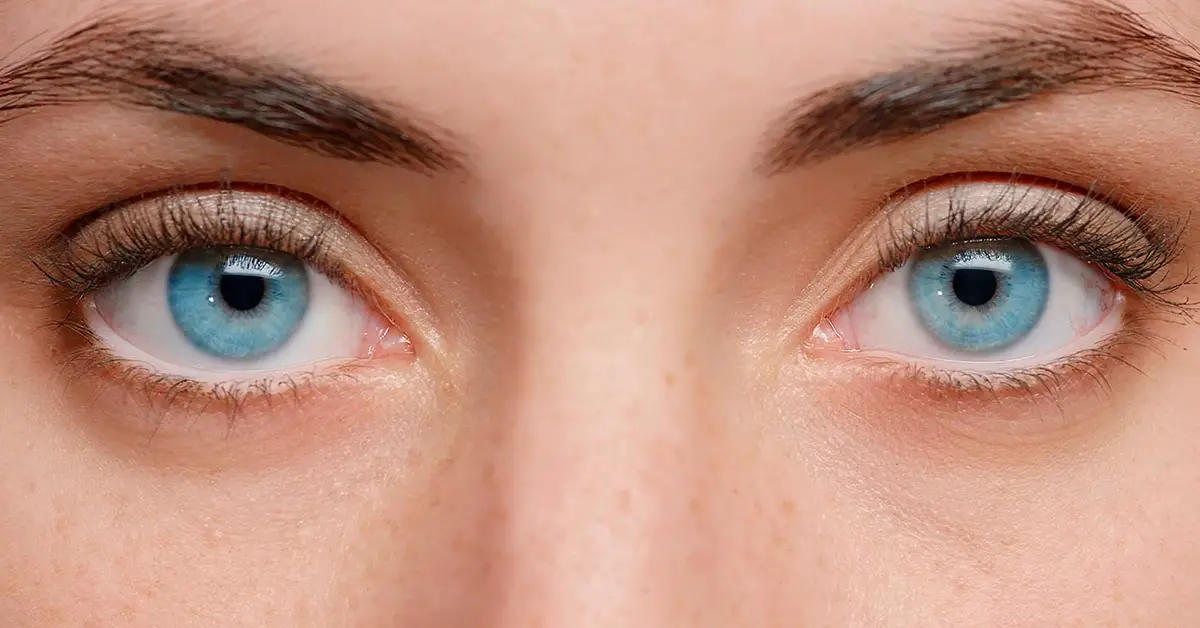At one point in human history, there were no humans with blue eyes. As a blue-eyed person myself, that kind of messes with my head a little bit! But it’s true. From the dawn of human existence up until just a few thousand years ago, there were no blue-eyed people anywhere in the world. But all of that changed one day with the birth of a baby who had a physical feature never before seen – blue eyes.
According to a study, all blue-eyed humans have a single, common ancestor. A team at the University of Copenhagen was able to identify a genetic mutation that happened somewhere between 6,000 and 10,000 years ago that sparked a new eye color shared by humans still alive today.
A world first
“Originally, we all had brown eyes,” said Professor Hans Eiberg from the Department of Cellular and Molecular Medicine in the study published in Science Daily. “But a genetic mutation affecting the OCA2 gene in our chromosomes resulted in the creation of a “switch,” which literally “turned off” the ability to produce brown eyes.”
OCA2 is the name given for gene codes for the P protein. The P protein is involved in the production of melanin, which determines things like skin, hair, and eye color. The eye color of people with brown or green eyes is determined by the amount of melanin in the iris of that person’s eyes.
When the OCA2 gene is switched off, this produces humans who have no melanin – a condition called albinism.
Blue-eyed people are a bit different though. For those who have blue eyes, there is a switch in the OCA2 gene that creates a slight variation in the amount of melanin in their eyes. This produces the blue coloration of the iris.
“From this we can conclude that all blue-eyed individuals are linked to the same ancestor,” says Professor Eiberg. “They have all inherited the same switch at exactly the same spot in their DNA.”
In a sense, all of us blue-eyed people are cousins. Mostly very, very distant cousins. But we’re all related to that one common ancestor. But unfortunately, it seems like we the blue-eyed of the United States (in particular) have begun to dwindle in numbers.
Blue-eyed people in decline
According to a 2002 study, about half of all Americans had blue eyes 100 years ago. Today, that number has dropped to only one in six. And researchers expect that this trend in the United States will be repeated elsewhere around the world.
What’s causing the decline of blue eyes in America? In short: immigration and changes in human coupling.
Put simply, more people with brown eyes are immigrating to the United States than people with blue eyes. And while in the past, people with blue eyes were more likely to romantically pair up with other individuals with blue eyes, this is less true today. This created a sort of ‘artificial high’ in the number of people who had blue eyes.
When two people with blue eyes have children, the children are fairly likely to have blue eyes as well. When a person with blue eyes has children with a person with brown eyes, the likelihood of blue-eyed children is reduced. This means that the downward trend of blue-eyed people is highly likely to continue.
But will we ever go fully extinct? No. If someone with blue eyes has a child with brown eyes, the blue-eyed gene hasn’t disappeared. Their brown-eyed child continues to carry it. That gene has the potential to reappear again in that child’s offspring.
And not every couple with mixed eye colors will produce offspring with only brown eyes. In my case, my mother has blue eyes and my father’s eyes were brown, but I was born with blue eyes.
An exotic trait
It’s impossible to safely assume what the general reaction was to the first baby born with blue eyes. There may have been a huge fuss made, or maybe no fuss at all. But that first blue-eyed baby was a rare sight, and once again, blue eyes may become increasingly rare and exotic.
It’s not totally clear exactly how many blue-eyed people there are in the world now. While researching for this article, I found some sources that claim 8 to 10 percent of humans have blue eyes. Another suggests it’s closer to 17 percent.
In any case, blue-eyed people are uncommon, but not exactly exotic or rare. That, however, could change with time. A few centuries into the future, people with blue eyes could constitute a much smaller share of the total population. But for now, the gene that causes blue eyes is here to stay.
Read Next: Women Are Sharing Body ‘Facts’ They Heard From Men, And We Don’t Know Whether To Laugh Or Cry
Sources
- “Blue-eyed humans have a single, common ancestor.” Science Daily. Accessed December 29, 2020.
- “Cohort effects in a genetically determined trait: eye colour among US whites.” Taylor & Francis Online. M. D. Grant & D. S. Lauderdale. Accessed December 29, 2020.
- “Eye Spy: Worldwide Eye Color Percentages.” Healthline. Ann Marie Griff, O.D. Accessed December 29, 2020.
- “This Is Exactly How Many People Have Blue Eyes.” Yahoo Finance. Sarah Crow. Accessed December 29, 2020.

